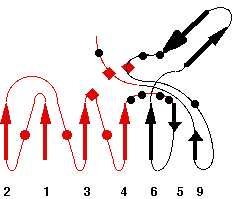1EX9
Name : Pseudomonas aeruginosa lipase complexed with RC-(RP,SP)-1,2-dioctylcarbamoyl-glycero-3-O-octylphosphonate
Revelation date : 18-Oct-2000
Family : Bacterial_lip_FamI.1
Gene_locus : pseae-llipa
PDB file : ESTHER: header of PDB entry RCSB: Full entry
Comment
Ligand :
References (1)
| Title : Crystal structure of pseudomonas aeruginosa lipase in the open conformation. The prototype for family I.1 of bacterial lipases - Nardini_2000_J.Biol.Chem_275_31219 |
| Author(s) : Nardini M , Lang DA , Liebeton K , Jaeger KE , Dijkstra BW |
| Ref : Journal of Biological Chemistry , 275 :31219 , 2000 |
| Abstract : Nardini_2000_J.Biol.Chem_275_31219 |
| ESTHER : Nardini_2000_J.Biol.Chem_275_31219 |
| PubMedSearch : Nardini_2000_J.Biol.Chem_275_31219 |
| PubMedID: 10893416 |
| Gene_locus related to this paper: pseae-llipa |
Representative scheme of Prolylcarboxypeptidase structure and an image from PDBsum server

